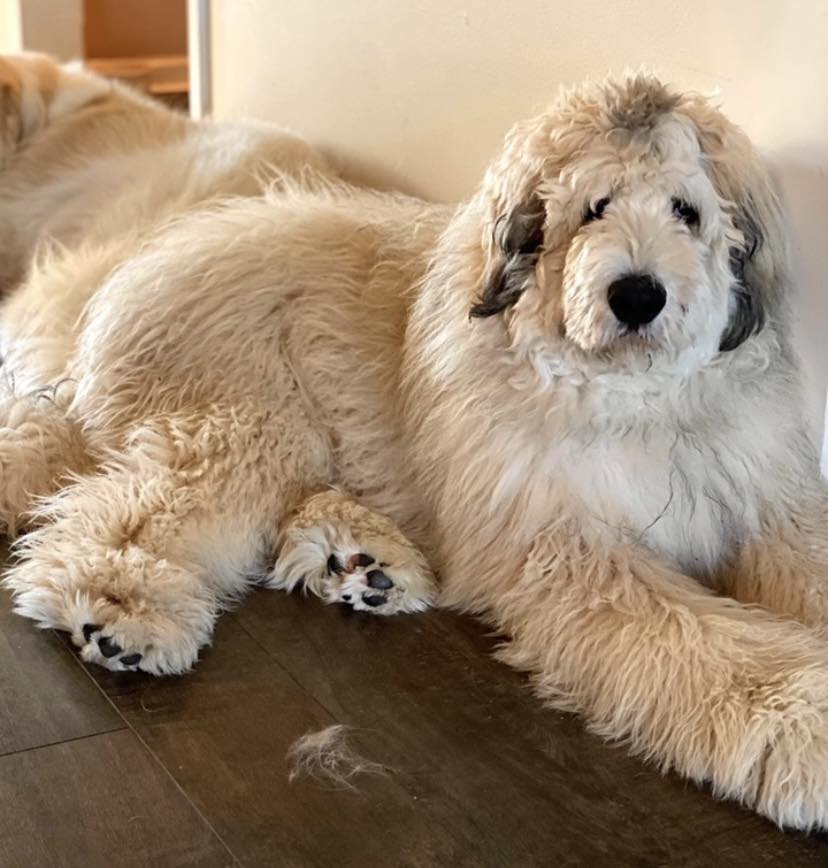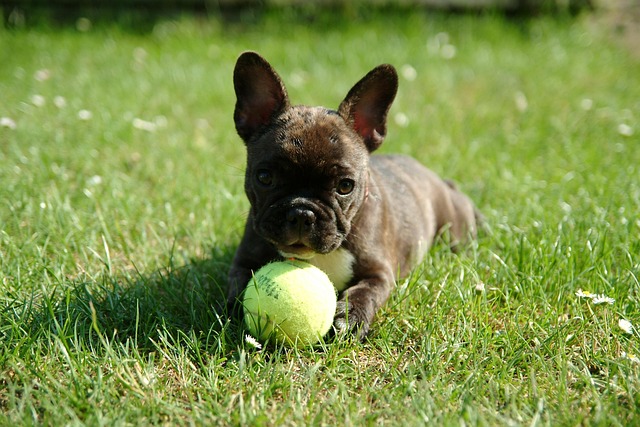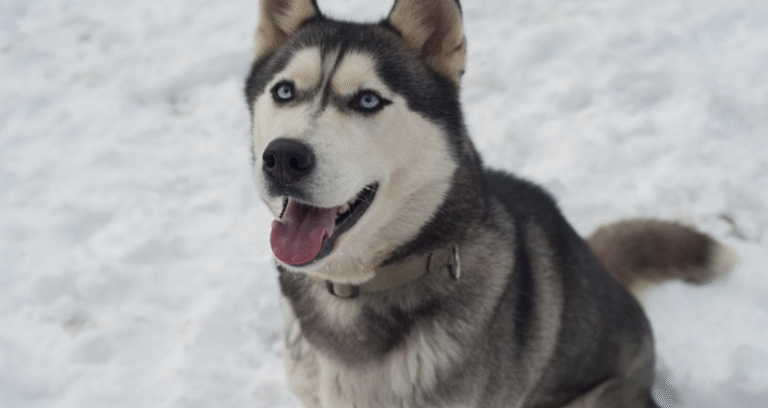The Pyrenees Poodle, usually known as the Pyredoodle, is a charming hybrid dog breed that combines intelligence and elegance. It’s the product of mixing a Great Pyrenees and Poodle mix, also referred to as a Great Pyrenees Poodle mix or Poodle Great Pyrenees mix. These gentle giants are famous for their large stature, plush double coat, and calm, loyal nature. Like other Great Pyrenees mix dogs, they carry a perfect blend of strength, intelligence, and affection, making them wonderful companions for families.
Pyredoodles have become a favorite among American households thanks to their even-tempered personalities and their strong bond with children and other pets. Their wavy or curly coats need regular grooming to maintain their soft texture and keep them looking their best.
Given their playful and active temperament, most Pyredoodles thrive in homes with plenty of space to roam and play. For dog lovers interested in exploring similar breeds, the Pyrenees and Pitbull mix is another fascinating cross that shares the Great Pyrenees’ protective instincts and loyalty.
Read on to discover everything you need to know about this lovable hybrid — from their personality and grooming needs to whether the Pyredoodle’s lifestyle fits your family.
What Is A Pyrenees Poodle?
A Pyrenees Poodle, known as a Pyredoodle, is a mixed breed dog between a Great Pyrenees and a Poodle. This fluffy hybrid is a unique blend of both breeds’ most wonderful traits. It results in a dog that is, ironically, best known for its impressive size, intelligent mind, and formidable guarding instincts.
Most Pyredoodles weigh 85-100 lbs and measure 15-32” tall at the shoulder. Even though they are big dogs, they tend to walk on a quiet, gentle energy that makes them very adaptable to most home environments. Their thick, curly coats require consistent grooming, including brushing and shaving to prevent matting and keep them healthy and comfortable.
As one of the most popular designer dog breeds, Pyredoodles have gained favor as family dogs and watchdogs. Their instinct to guard, combined with their gentle disposition towards children, set them apart as a designer mixed breed. Many owners appreciate their pets for their combination of intelligence, loyalty, and placid temperament.
They consider these traits perfect for active households that want a dog and a protector.
Parent Breed Heritage
The Great Pyrenees originally served as a guardian in the mountains of Central Asia, developed to guard herds against predators. These dogs have a well-deserved reputation for their ability to make quick, smart decisions. Originally bred as water retrievers, Poodles have a long history of hunting and companionship.
They are highly valued for their intelligence and trainability. When these two breeds are combined, the Pyrenees Poodle tends to take after the Pyrenees’ protective instincts and the Poodle’s intelligence. This combination makes them highly trainable as well as highly alert and aware.
The “Why” Behind This Mix
Humans breed Pyrenees Poodles in hopes of producing a dog that strikes a healthy balance of smarts and muscle. The aim here is to breed the Poodle’s ability to be trained with the Great Pyrenees’ natural protective instincts. This mix brings what’s known as hybrid vigor, or a greater variety of robust, healthy traits.
Pyredoodles are mainly selected for their calm disposition, loyalty and fit into various home lifestyles.
Our POV: Gentle Guardian Potential
Pyredoodles are gentle giants, and they make excellent family guardians who can be affectionate companions. Their guard dog side ensures they watch over children and homes with a protective eye. Their sweet disposition helps them develop into gentle companions.
This unusual combination of traits sets them apart, not only as guardians, but as loving family members.
Pyrenees Poodle: Looks & Size

The Pyrenees Poodle, known as the Pyredoodle, is known for its hefty appearance. It is best known for its distinctive, silky, often curly coat. This generation gap between their parent breeds is what makes this mixed breed a unique one. As we’ve mentioned, their appearance can vary greatly from dog to dog!
Their bodies are often muscular and solid, with a wide chest and strong bones. The result is a face that reflects both the alert Poodle and the gentle Pyrenees. The Pyrenees Poodle’s size is determined primarily by the size of the Poodle parent, which may be standard, medium or mini. Understanding how big they’re going to get allows families to plan for their space and care needs.
Full Grown Size Expectations
Fully grown Pyrenees Poodles typically measure 15 to 32 inches in height at the shoulder. In addition, they can range in weight from 20 to 115 pounds. This large range is due to the Great Pyrenees being a large dog, but Poodles come in multiple sizes.
The genetics of your pup play a huge role in determining where it’ll fall on this scale. Moreover, the size of the parents is a huge factor in this equation. In general, the bigger the dog, the more space and food it requires, while the smaller dogs tend to adapt easier to civic home or apartment life.
The Mini Pyrenees Poodle
Mini Pyrenees Poodles are created through breeding a Miniature or Toy Poodle with a smaller Pyrenees. As a result, these pups typically weigh below 35 pounds and don’t reach more than 18 inches in height.
People prefer the minis because they are more suitable for compact living situations. Her smaller size can introduce hazards such as developing joint conditions, making routine veterinary checkups even more important.
Coat Types And Colors
The majority of Pyrenees Poodles will have a dense, double coat that’s curly or wavy. They shed minimally and are typically much better tolerated by allergy sufferers.
Typically white, black, gray, and tan, often with distinctive patches or markings. Curls require a lot of brushing to prevent mats and tangles from forming.
Our Take: Predicting Appearance
Our Take Pyrenees Poodles are still a fairly new crossbreed, so it’s best to be prepared for a wide variety of sizes and looks even within one litter. Get ready for a variety of sizes and coats—even within a single litter.
To aspiring owners who have a specific appearance in mind, seeing the parents provide useful hints.
Pyrenees Poodle Temperament

As with any mixed breed, the Pyrenees Poodle’s temperament will be influenced by both parent breeds. These dogs are primarily popular due to their loyal and affectionate temperament. They are known to be very protective with their families, nurturing and kind, especially towards children and adults just as well.
Due to their friendly and outgoing nature, most Pyredoodles can be a perfect match for almost any type of household. Others will be barkers or howlers, linking their habits all the way back to their ancestry. This creates an essential component of their communication and guarding instinct.
Socialization is huge in developing their well-rounded temperament. Just like most breeds, early socialization with a variety of people, environments, and other animals will allow them to mature into polite pooches. Their protective streak emanates from their Great Pyrenees side, but their intelligence and problem-solving abilities hail from the Poodle.
Those unique characteristics come together to form a breed that makes an incredibly loyal family pet and protector.
Pyrenees Protection, Poodle Smarts
The Great Pyrenees’ protective instinct combines with the Poodle’s smarts. This combination makes the Pyredoodle observant and alert to movement or changes in their environment. Most owners would agree that they are extremely quick learners of commands and very adept at puzzling things out.
Proper training is vital to ensure they realize their potential, while avoiding them becoming too suspicious or headstrong.
Family Life And Social Needs
Pyredoodles do best in family environments, particularly those with children. They usually do very well with other animals. Regular social periods with people and other creatures help to make them contented.
In a full household, establishing a schedule and ensuring time for daily walks and play activities will allow them to blend seamlessly into the family.
Trainability: A Unique Challenge
Training a Pyredoodle will be a joyous challenge. They react most favorably to gentle praise and food rewards. They can be a little hardheaded, but keeping things fun and positive in short sessions is key.
Keeping the right perspective and remaining patient and calm will take you very far.
Our View: The Ideal Owner
The ideal Pyrenees Poodle owner will be patient and committed to training. They know when social time is warranted and when it’s not, and they give loving, but firm, guidance.
Caring For Your Pyrenees Poodle

A Pyrenees Poodle combines the quick-thinking intelligence of a Poodle with the calm, even temperament of a Great Pyrenees. Their care involves meeting their daily needs, health, and routines that will ensure they remain happy as well as healthy.
Easy to care for with proper attention. Proper care begins with the fundamentals—regular veterinary checkups, a nutritious diet, and lots of exercise.
1. Grooming That Unique Coat
The Pyrenees Poodle boasts a dense, occasionally wavy fur coat that requires frequent brushing to prevent mats and tangles. Start with brushing every two days. A slicker brush and coat trimming shears will go a long way in preventing matting and maintaining a healthy, beautiful coat.
Gently clean between any skin folds with a damp cotton ball, and then dry the area completely to prevent dirt and bacteria from accumulating. A visit to a professional groomer every six to eight weeks will keep their coat in its very best condition.
2. Exercise: Energy And Space
This is a very energetic breed. Regular exercise through walks, fetch games, or even a run alongside you will keep your Pyrenees Poodle entertained and out of trouble.
As a rule of thumb, for puppies adhere to five minutes of exercise per month of age, up to two times a day. Prevent young puppies from falling down stairs by closing them off until they are six to eight months old.
Games such as fetch or scent work keep them stimulated mentally and physically.
3. Training: Positive Methods Rule
Treats, praise, and patience will go a long way in teaching your Pyrenees Poodle. Short, consistent training sessions develop trust and memory.
Start with basic commands, such as sit, stay, and come. Make sure your training is engaging so your dog doesn’t get bored!
4. Mental Stimulation Is Key
Brain games prevent anxiety and boredom. Boredom can lead to anxiety or destructive behavior.
Puzzle toys, snuffle mats, or hide-and-seek games are all great options. Incorporate training into everyday life to keep their mental faculties in check.
5. Nutrition For Optimal Health
Select a premium dog food appropriate for their size and energy level. You have to measure portions to make sure they’re not gaining too much weight.
Choose a kibble that lists whole meat, meat meals or balanced fats first, and avoid fillers.
Pyrenees Poodle Health Guide
Personality The Pyrenees Poodle, or Pyredoodle, is a mix of the Great Pyrenees and the Poodle. That combination makes this hybrid a great fit for families or individuals seeking a warm-hearted friend that doesn’t shed everywhere. Here are some important health issues to be aware of to help these dogs continue to flourish in regular life.
Potential Genetic Concerns
Potential Genetic Concerns Pyredoodles can inherit health concerns of both parent breeds. Hip dysplasia is prevalent, so be mindful of any limping or alteration in your dog’s gait. Eye diseases such as progressive retinal atrophy can appear.
Breeders that test their dogs for these risks contribute to reducing the chances of transmitting them. Owners need to be vigilant for early signs of pain, abnormal gait, or changes in vision. Our vet’s screenings and recommendations can help if you notice something unusual.
Expected Lifespan Insights
With good care, a healthy Pyredoodle can live between 12 and 14 years, with most making it to 10 or 12. Genetics, diet, and exercise are all contributors. Routine examinations can identify problems early on, before they become more severe.
Proper food, portion control, and regular exercise can help them live longer lives. Mental games and social time are equally important to their ongoing vibrance, as well.
Proactive Wellness Tips
Weighing them may be a new issue so measure meals with a cup and keep treats to a minimum. High-energy play and long, regular walks are essentials. Their dense, curly or wavy coats require frequent brushing and professional grooming to prevent matting.
Vaccines, flea control, and claw care are essential for your pet’s health.
Our Advice: Vet Partnerships
Our Advice Vetted Relationships A trusted vet is important. Find one who understands designer breeds, from the start. Annual visits allow for monitoring of weight, joint health, and eyes.
Request guidance on nutrition, oral health, and enrichment. This team effort will keep your Pyredoodle healthy and happy for many years to come.
Is This Mix Your Match?

Choosing a Pyrenees Poodle, or Pyredoodle puppy, requires a clear look at your day-to-day life. This hybrid breed blends the Great Pyrenees’ calm personality with the Poodle’s intelligence, making them excellent family dogs for novice dog owners.
Best Home Environments
Pyredoodles thrive in environments with plenty of space to stretch their legs. Having yards with space gives them opportunities to run and be dogs. They will adjust to lesser square footage if daily walks and play are included in their regimen.
In multi-unit housing, daily excursions out the front door are essential. A regular schedule of exercise and play helps to keep dogs’ minds active. With their dense double coat, weekly brushing keeps them looking their best. Without these, they can become uninterested or anxious.
Lifestyle Compatibility Check
Fix 1 – Work schedules are important. Since Pyredoodles thrive on companionship and a stable routine, leaving them alone for long hours would not be ideal. Families with children or active lifestyles-oriented people would find these dogs to be a great match.
Lifestyle compatibility Good fits are those who are prepared for regular grooming, and are willing to commit time for training. Early socialization addresses their sometimes timid attitude towards other dogs.
Urban vs. Rural Living
With lots of room to roam and no need to mind the neighbors, Pyredoodles take to rural homes. Urban living is effective, though it requires intentional walking and regular trips to dog parks to get both exercise and socialization.
Owners should be prepared to brush their coats at least once a week. They have to stay on top of veterinary care as well since they can develop cataracts later in life.
Our Honest Opinion
Although they are immensely clever and brave, their grooming needs and love for exercise can be challenging. They have given us years of happiness but require all-absorbing care and attention.
Finding Your Pyrenees Poodle Pup
Finding your new furry friend requires a bit more effort than a simple online search. These dogs can weigh as much as 100 pounds, and stand at 32 inches tall. Future owners should be prepared to manage these pups’ high energy and stubborn streaks!
Doing your homework ensures that you get a healthy pup and that you’re dealing with a breeder who stands behind their dogs.
Spotting Responsible Breeders
Responsible breeders are transparent with their breeding process. They provide documentation of health testing and information about both parents’ histories.
Ask about their breeding certifications and how they care for their puppies, and steer clear of breeders who don’t want you to ask. Request to meet the puppy’s parents and tour the facility.
This provides a preview of the pup’s expected size, temperament, and health. A responsible breeder will walk you through their grooming practices—important for hypoallergenic coats that require grooming every 6-10 weeks.
Considering Adoption Avenues
Pyrenees Poodle mixes can often be found at shelters and rescue groups. Adoption typically comes with reduced upfront expenses, often less than $500, while allowing you to save a dog’s life.
Most rescues run regular local meet and greets and/or maintain robust online inventories. Petfinder and Adopt-a-Pet are great places to start.
Mixed breeds are usually more healthy and adaptable.
Ethical Breeding Questions
Inquire with breeders about their motivation for breeding Pyrenees Poodles. Ask what health measures they have, if the puppies are left with their mother at least 8 weeks.
Other good questions include: Do you provide vet records? How much socialization do pups receive?
Ethical Breeding Questions How do you help new owners get started?
Our Tip: Patience Pays Off
Waiting for the right breeder or adoption match pays off. Please be patient with your search!
Consider whether your new pup will suit your home, activity level, and future goals.
Conclusion
The Pyrenees Poodle adds a vibrant splash of cuckoo, smarts, class, and love. People in the U.S. Looking for an intelligent, faithful canine companion should have much to love in this breed. With their cuddly coat and sweet disposition, these dogs are undeniably adorable! This active little guy adapts well to busy homes, enjoys the best of our local summer hikes and can settle in to enjoy a cozy family movie night. Providing loving attention and regular activity, these dogs light up.
Big backyards go a long way, but a dog doesn’t require a mansion—just people who are there for them. Considering introducing one to your crew? Visit local rescues or reputable breeders who are knowledgeable. Reach out to owners, inquire about the breed, and get time with the dog breed. A Pyrenees Poodle might just be the friend you didn’t know you were looking for.
Frequently Asked Questions
What is a Pyrenees Poodle?
What is a Pyrenees Poodle? This designer breed inherits the best of both worlds from its parent pooches, providing a distinct appearance and temperament.
How big does a Pyrenees Poodle get?
Pyrenees Poodle weight Most Pyrenees Poodles will weigh anywhere from 50 to 100 pounds. They measure between 22-32 inches tall in shoulder height. Their size varies based on the parents, namely the Poodle’s size.
Are Pyrenees Poodles good with kids?
Are Pyrenees Poodles good with kids. They are generally patient with kids, which makes them an excellent family companion when socialized from an early age.
How much exercise does a Pyrenees Poodle need?
As a large and active dog breed, they require an hour of exercise per day. Daily walks, vigorous playtime, and brainteasers are necessary to keep them satisfied and well-rounded.
Do Pyrenees Poodles shed a lot?
They do shed, but most have coats that are much lower shedding due to their Poodle heritage. Consistent brushing will keep loose hair under control and their coat healthy.
What health issues should I watch for?
What health problems should I look out for. Routine veterinary care and a balanced, nutritional diet are essential to identifying and preventing issues before they start.
Where can I find a Pyrenees Poodle puppy in the United States?
Whether you buy from a breeder or adopt through a rescue, do your research. Make sure to ask about health testing and to meet the pup’s parents to ensure that you’ll be a good match.





